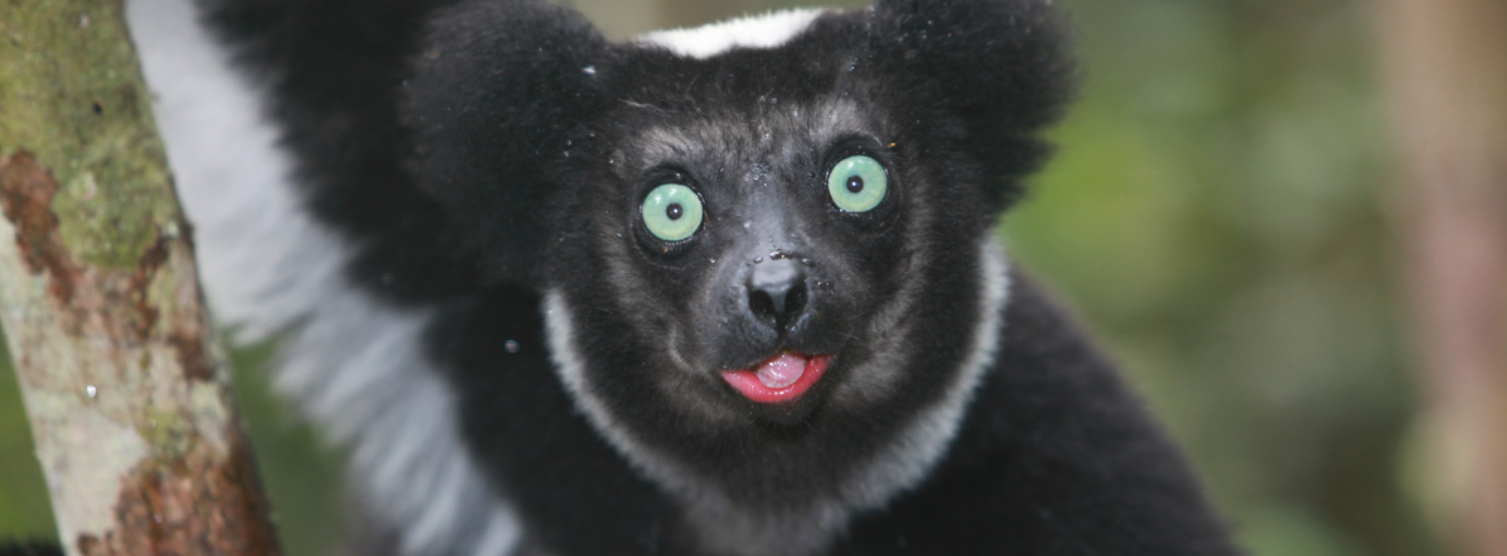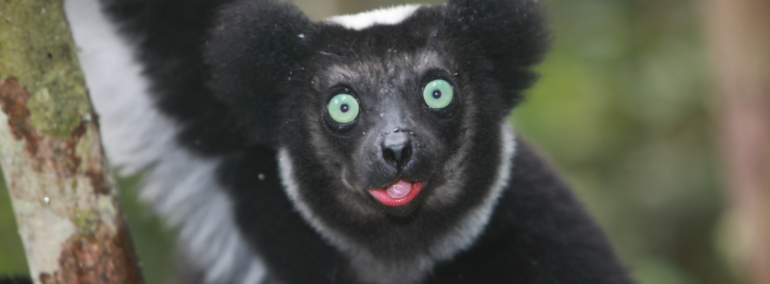Omanyano ovanhu koikundaneki yomalungula kashili paveta, Commisiner Sakaria takunghilile
Veronika Haulenga
Omanyano ovanhu koikundaneki yomalungula kashili paveta, Commisiner Sakaria takunghilile
Veronika Haulenga
Listeners:
Top listeners:
-
play_arrow
Omanyano ovanhu koikundaneki yomalungula kashili paveta, Commisiner Sakaria takunghilile Veronika Haulenga
Elon Musk could avert global species extinction with only a portion of his wealth


- A new study has pinpointed the most crucial areas around the world for protecting Earth’s rarest and most endangered species, the vast majority of which are found in tropical and subtropical moist forests.
- Just five countries — the Philippines, Brazil, Indonesia, Madagascar and Colombia — contain 59% of all identified sites globally.
- Only 7% of land protected over the past five years overlapped with these critical areas for rare species, suggesting conservation efforts could be better targeted to protect biodiversity.
- Protecting the majority of species would cost approximately $34 billion per year — less than 0.2% of the U.S. GDP, less than 5% of U.S. fossil fuel subsidies or around 16% of Elon Musk’s current net worth.
Can we save thousands of the world’s most threatened animals and plants from extinction by protecting just a tiny fraction of the Earth’s surface? A new study in Frontiers in Science suggests that safeguarding just 1.2% of the planet’s land surface, about 1.64 million square hectares (633,200 square miles), or an area slightly smaller than Alaska, could do just that.
Researchers mapped out 16,825 unprotected sites harboring rare and threatened species. Dubbed “Conservation Imperatives,” these are the areas they say must be protected within the next five years to avoid imminent extinctions.
The researchers combined six different global biodiversity data sets and used satellite imagery to determine which places still contain suitable habitat for rare species, excluding urban areas, farmland and severely degraded land.

The vast majority (about 75%) of these high-priority “Conservation Imperatives” are located in tropical and subtropical moist forests. Geographically, the sites are highly concentrated, with just five countries — the Philippines, Brazil, Indonesia, Madagascar and Colombia — containing 59% of all identified sites globally.
Eric Dinerstein, the study’s lead author and senior biodiversity expert at the NGO RESOLVE, explains that many species on Earth are rare, with limited geographic ranges or low density populations. He notes that these rare species tend to be clustered in specific areas. “In our study, zooming in on this rarity, we found that we need only about 1.2% of the Earth’s surface to head off the sixth great extinction of life on Earth.”
“These [Conservation Imperative] sites are home to over 4,700 threatened species in some of the world’s most biodiverse yet threatened ecosystems,” said study co-author Andy Lee, also of RESOLVE. “These include not only mammals and birds that rely on large intact habitats, like the tamaraw [Bubalus mindorensis] in the Philippines and the Celebes crested macaque [Macaca nigra]in Sulawesi, Indonesia, but also range-restricted amphibians and rare plant species.”

Protecting these areas isn’t without challenges. Karl Burkart, study co-author and deputy director of One Earth, points out that most identified sites are quite small. About 75% of the sites are under 1,000 hectares. Many of these small parcels are surrounded by agricultural land or other forms of development, making protection more complex. Additionally, there are overlaps with oil & gas, mining and timber concessions in some of these crucial areas.
Although these collectively make up just 1% of the total Conservation Imperatives area Burkart emphasizes that some of these small parcels might contain the last remaining populations of critically endangered species at risk of extinction within the next decade.
On a more positive note, more than one-sixth of Conservation Imperatives sites overlap with Indigenous territories. Often the most effective stewards of biodiversity, these groups have jurisdiction over about 17% of the identified sites. “This should be a focus to help secure land tenure rights for the tribes stewarding these landscapes,” Burkart said.
The study also highlights a concerning trend in recent conservation efforts. Despite global initiatives to increase protected areas, only 7% of land protected over the past five years overlapped with these critical areas for rare species. This suggests that current conservation strategies may not be effectively targeting the most crucial habitats for endangered species.

What’s the price tag for protecting these crucial areas? The researchers estimate it would cost about $169 billion over the next five years.
Lee put this in perspective: “This represents less than 0.2% of the United States’ GDP, less than 9% of the annual subsidies benefiting the global fossil fuel industry and a fraction of the revenue generated from the mining and agroforestry industries each year.”
Focusing solely on tropical Conservation Imperatives would cost around $34 billion annually over the next five years and could “prevent the majority of predicted near-term extinctions,” the authors say.
For further perspective, Elon Musk’s net worth is currently $215.5 billion, followed by Jeff Bezos at $203.7 billion and Mark Zukerberg at $179 billion.

The relatively modest cost of protecting these areas, when compared with global spending in other sectors, is highlighted by David Lindenmayer, an expert at Australian National University who was not involved in the research but served as a reviewer of the study.
“The article really highlights how important but also straightforward reservation of the most crucial areas for conservation could be in terms of financial costs — a tiny fraction of the money wasted on armaments every year — but there also could be huge employment and economic benefits of strengthening conservation efforts that better support local communities,” Lindenmayer told Mongabay.
To arrive at these economic estimates, the research team analyzed prices from numerous land protection projects over the past 14 years, considering factors like land type and location. However, they stress that these are rough estimates, as there are various ways to protect land, each with different costs.
The researchers emphasize that local people, including Indigenous communities, will need to decide what protection methods work best for their areas.

So how do we pay for this? In the past, money for protecting nature has mainly come from governments, charitable donations, carbon offset programs like REDD+, and companies compensating for their environmental impacts. At the Kunming-Montreal negotiations the idea of wealthy countries pledge $20 billion a year for nature conservation was discussed. However, “it is far from a done deal,” said Burkart.
Burkart suggests “new, innovative funding approaches,” such as an on currency trades to generate significant funds for conservation efforts.
“Right now, currency trading is the most frictionless form of wealth transfer. It’s too frictionless, allowing rampant currency speculation which isn’t good for the economy,” he said. Approximately $7.5 trillion is traded daily, and he suggests that a one basis-point fee would generate approximately $250 billion per year in new finance. “These funds could be directed to land acquisition, Indigenous land tenure, and other conservation measures to protect high biodiversity areas.”

The study also finds that 38% of the identified areas are either adjacent to or within 2.5 kilometers (1.5 miles) of existing protected areas. The researchers suggest this proximity could make expanding protection more feasible and reduce management costs.
However, the authors acknowledge that simply setting aside land will not be enough in many cases. Additional conservation actions like controlling invasive species or hiring patrols to protect against illegal hunting and logging may be necessary. Collaboration with and leadership by Indigenous peoples and local communities is crucial, the researchers stress.
The study comes as the world grapples with accelerating biodiversity loss. A U.N. report last year warned that around 1 million animal and plant species are threatened with extinction, many within decades.
The research team says it hopes its findings will guide countries, conservation groups and businesses in focusing their efforts where they can have the biggest impact on averting these extinctions. It presents the Conservation Imperatives as a starting point for more detailed, local conservation planning efforts.
“It’s sort of a Noah’s ark moment,” Burkart said. “We need to focus ASAP on the sites harboring rare and threatened species… Really, we are going to need a movement of people around the world to save these remaining areas before it’s too late.”
Banner image of an indri (Indri indri), a Critically Endangered primate native to Madagascar. Photo by Rhett A. Butler for Mongabay.
Liz Kimbrough is a staff writer for Mongabay and holds a Ph.D. in Ecology and Evolutionary Biology from Tulane University, where she studied the microbiomes of trees. View more of her reporting here.
Citation:
Dinerstein, E., Joshi, A. R., Hahn, N. R., Lee, A. T., Vynne, C., Burkart, K., … & Zolli, A. (2023). Conservation Imperatives: Securing the Last Unprotected Terrestrial Sites Harboring Irreplaceable Biodiversity. Doi: 10.3389/fsci.2024.1349350/full
Written by: Contributed
biodiversity protection Brazil Colombia conservation funding Conservation Imperatives conservation strategies endangered species Environmental Challenges global biodiversity crisis Indigenous stewardship Indonesia land protection Madagascar Philippines subtropical forests tropical forests
Similar posts
Windhoek Weather
Most popular

Namdia Heist: More questions, lots of confusion

Omuhwahwameki Michael okuunganeka oshikonga shoku patitha oostola dho Rani moshilongo ashihe.

Walvis Bay woman loses over N$777.000 to a fraudster

Don’t let Pohamba’s tears over Nujoma’s death go to waste

Justice Served: Jandre Dippenaar Found Guilty of Six Murders in Swakopmund Court
Copyright 2025 Future Media (Pty) Ltd | Website by Digital Platforms
Tel: +264 83 000 1000 | Email: news@futuremedia.com.na





